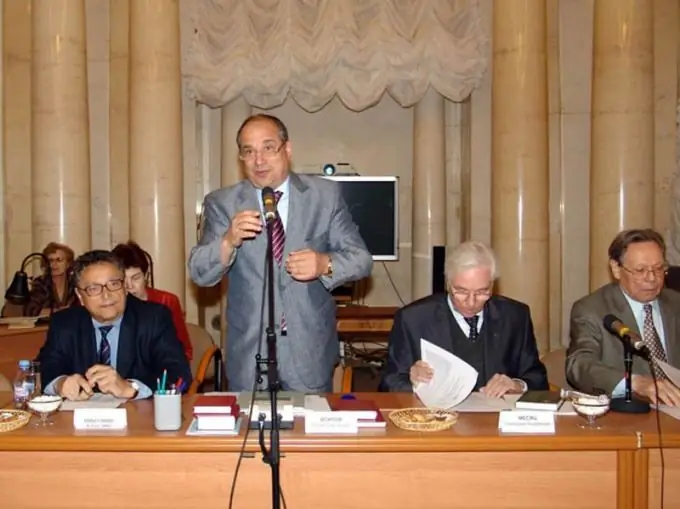It is customary to call a conference an extended meeting in which representatives of several organizations participate. Conferences can be departmental, sectoral, regional, interregional, international. They discuss a variety of, but thematically related problems. In some cases, it is the decision of the conference that determines the development strategy of the organization. Any educated person can hold such an event, but some considerations must be taken into account.

Necessary
- - list of participants;
- - a summary of the speeches;
- - visual materials;
- - technical means.
Instructions
Step 1
Make a list of participants. Usually the speakers are notified about the upcoming conference in advance, they must confirm their agreement and inform the topic of the reports. Sometimes the conditions require the provision of the texts of reports or, at least, a summary. Check out the materials.
Step 2
Decide on the rules. It depends on how long the conference will last, on the number of speakers, as well as on the forms of work. Are only plenary sessions envisaged or will part of the work be held in sections? In the second option, more time can be allocated for reports.
Step 3
Be sure to set aside time for co-presentations and answering questions. Decide on the form of the questions. Participants can ask them orally, immediately after the presentation. Then you should take care of additional microphones. Questions can also be submitted in writing, then you need to think about the place where the listeners will put the notes. You can prepare some of the questions in advance.
Step 4
Make an agenda. The order of speeches can be different, it depends on the topic, but in any case, it is better to discuss general issues at the beginning of the conference, and then move on to particulars. After every one and a half to two hours of work, provide a short break (it's a good idea to organize a coffee break), and in the middle - a long break, during which participants can relax and have lunch. If the conference is short (for example, re-election), long breaks are not necessary.
Step 5
Check the condition of the technical means. Check your computer and video player. Ask the presenters what equipment they need and what programs should be there. Ask presenters to provide visuals prior to the conference. It is very good if the person who works with the computer has a list of when to give which presentation. Before the conference, check if all the speakers have arrived, if there are any changes in the subject matter.
Step 6
Think about your opening remarks. You need to say a few words of welcome to the participants, explain what event the conference is devoted to, the procedure, the rules. Before the start of the reporting and election conference, give the floor to the chairman of the counting commission, who must say how many delegates were supposed and how many are present. If there are few missing, suggest starting the event. Sometimes it is appropriate at this moment to sing the anthem of a state or international organization. Offer to choose a chairman, secretary, counting and editorial commission. In many cases, the lists can be prepared in advance. Further, the event can be led by the chairman, who announces the draft agenda (it is better to type and print it before the start). First, the draft is adopted, then changes and additions are made to it, after which the agenda is approved as a whole.
Step 7
During the conference, the presenter, regardless of whether he is the chairman or not, must constantly be in the room. It is he who decides organizational issues as they arise. If you still need to leave, entrust your responsibilities to someone from like-minded people.
Step 8
The conference usually ends with the adoption of some kind of decision. The chairman reads out the text of the draft, the audience makes changes and additions, the editorial commission introduces them, after which the decision is approved.






